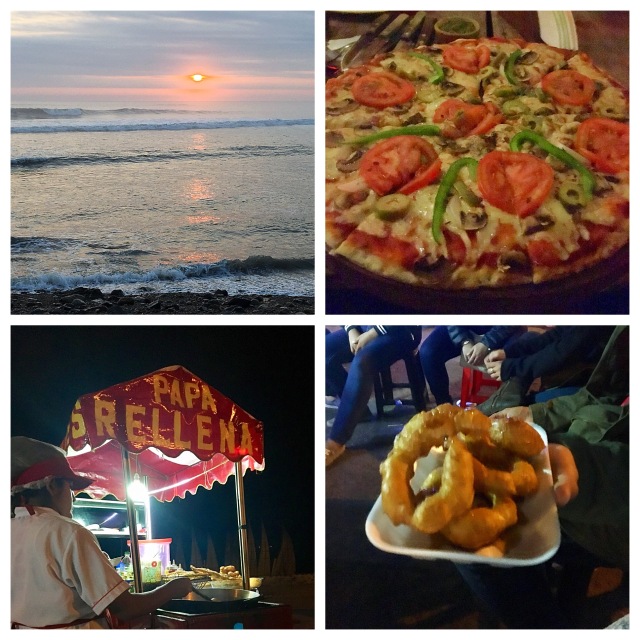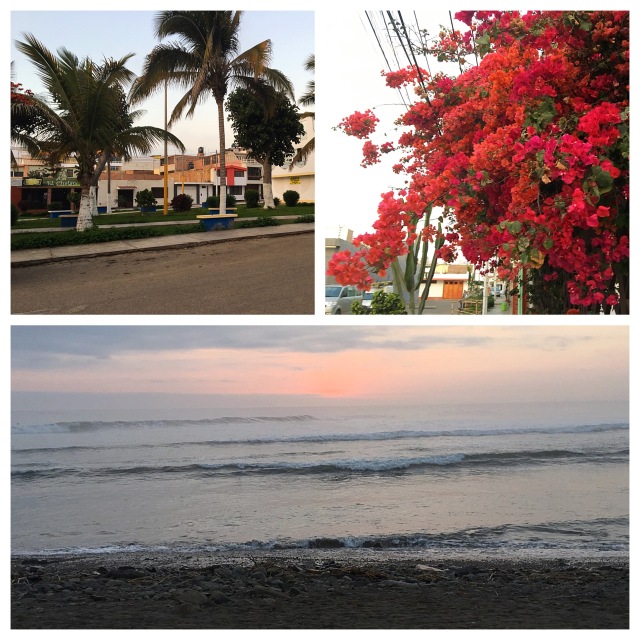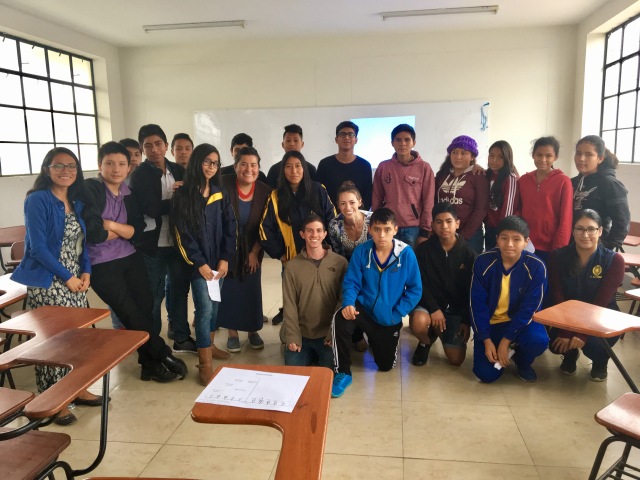This morning (Monday) began with our Terapia Conductual Dialéctica course, which focused on Distress Tolerance, TIPP, and Emotional Regulation. During times of crises, TIPP is a useful tool that one can utilize to take a step back from the crisis to de-escalate the situation. TIPP can be used when one is about to engage in dangerous behaviors during a crisis, when an individual needs to make an important decision, but is too overwhelmed to think/make a decision, the individual is not processing information effectively, the individual is emotionally overwhelmed, and/or the individual isn’t able to use his/her abilities.
TIPP stands for Temperature, Intense Exercise, Paced Breathing, and Paired Muscle Relaxation. With regards to temperature, the individual can put cold water or a bag of ice on his or her face, while bending over and maintaining respiration (holding his/her breath). The individual can also put his/her face in a bowl of cold water for 30-60 seconds, or put an icepack on his/her face while bending over, and maintaining respiration (holding his/her breath). This action helps reduce emotional and physiological arousal. The action of Temperature can also be used when the individual isn’t able to sleep due to anxiety and/or while experiencing dissociation during therapy.
According to mindfulnessmuse.com, “In order to get ourselves to a place of being capable of processing information, we must find a way to essentially ‘reset’ the nervous system. Fortunately, all mammals have something called the ‘mammalian diving reflex’ that forces the parasympathetic nervous system to kick in, which functions to relax us and calm us down.
Dr. Linehan explained that this reflex is activated by icy cold water (i.e., not freezing) on the face. In particular, the icy cold water must hit the parts of the face just below the eyes and above the cheekbones for the dive reflex to be activated.”
In regards to Itense Exercise, doing some form of intense exercise for 30-60 seconds can change one’s mood and lessen one’s negative mood, and increase positive affect. This can include running in place, jumping jacks, and/or running up/down a flight of stairs. Our emotions have the ability and tendency to make us ready for action (as in flight or flight), so an intense exercise can make regulate our body to a less emotional status.
Paced Breathing refers to inhaling and exhaling slowly (five or six breaths each minute with a four second inhalation and eight second exhalation). Paced breathing—in addition to the other actions can help us lower our level of emotional arousal and make the switch from utilizing our sympathetic nervous system (which is ready for flight or flight) to our parasympathetic nervous system (our more relaxed state).
Finally, with Paired Muscle Relaxation, the strategy is to tighten your muscles, noting the sensation of tension in your muscles (and you can work on specific muscle groups, one at a time). As you loosen your muscles, you can say the work “relax” aloud, noting the sensation of how your muscles feel. The goal with Paired Muscle Relaxation is to increase one’s awareness of tension and relaxation, and functions as one of the various abilities to overcome a crisis.
While these abilities, or strategies are meant to help during a moment of crisis, they are not by any means a solution to one’s crisis. These abilities/strategies should be paired with other strategies (i.e. confiding in somebody immediately after or seeking help by a professional).
When working with emotional regulation, one of the actions is to act in a manner contrary to the emotion that is currently affecting your behavior. First, you must identify the actions that are affected by your emotions, do the opposite action, and do so completely and fully, without holding back. Simply stated, you’ll want to do the opposite action of what you’re feeling (i.e. if you’re feeling lonely and went to isolate yourself, you would instead spend time surrounded by others). Instead of surprising what we’re feeling, we would simply use our emotions to guide opposite behaviors in order to make a change in how we’re feeling.
After class, we had our weekly meeting with a group of local women and family members in El Porvenir that I spoke about in prior posts. Each week, two students from the program are responsible for teaching the group members relaxation and emotional regulation techniques for them to utilize at any given moment and teach others in their community. This week’s topic focused on the difference between sadness and depression, as well as the importance of self-care—something that so many of us forget to do on a daily basis.
In order to emphasize the importance of self-care, each participant was taught the acronym CUIDARSE (caring for oneself):
C: Cariño (affection, especially for ourselves, no matter how difficult it may be)
U: Una cosa cada día (one thing per day—engaging in one activity that we enjoy doing on a daily basis)
I: Imitar al bebé (imitate a baby—while babies may not always be able to verbally communicate, they are still able to get their wants and needs met, which is exactly what each of us need to do as well. It is important for everyone to express exactly what they need, just as a baby does)
D: Descansar/dormir (rest/sleep—adequate rest is crucial for everyone)
A: Alimentarse bien (nourish/feed oneself well—proper nourishment is also very important)
R: Relajarse (relax—making time for ourselves to de-stress and calm down each and every day)
S: Socializar/Salir a pasear (socialize/go out for a walk—making time to be around others and taking time to enjoy the outdoors while de-stressing from our daily, hectic lives)
E: Ejercicio (exercise—20-30 minutes each day)
Imagine that you have a bottle of water and give a little bit to each person around you. There would be nothing left for you once you get thirsty. We can’t care for others if we can’t care for ourselves first. We tend to find ourselves telling those around us to care for themselves, but it shouldn’t be any different for us. It is just as important for us to follow the acronym CUIDARSE, and do exactly as it says—take care of ourselves.
Following the group, some of the other students and I went out for dinner, and made sure to enjoy the sunset during our last week here.









